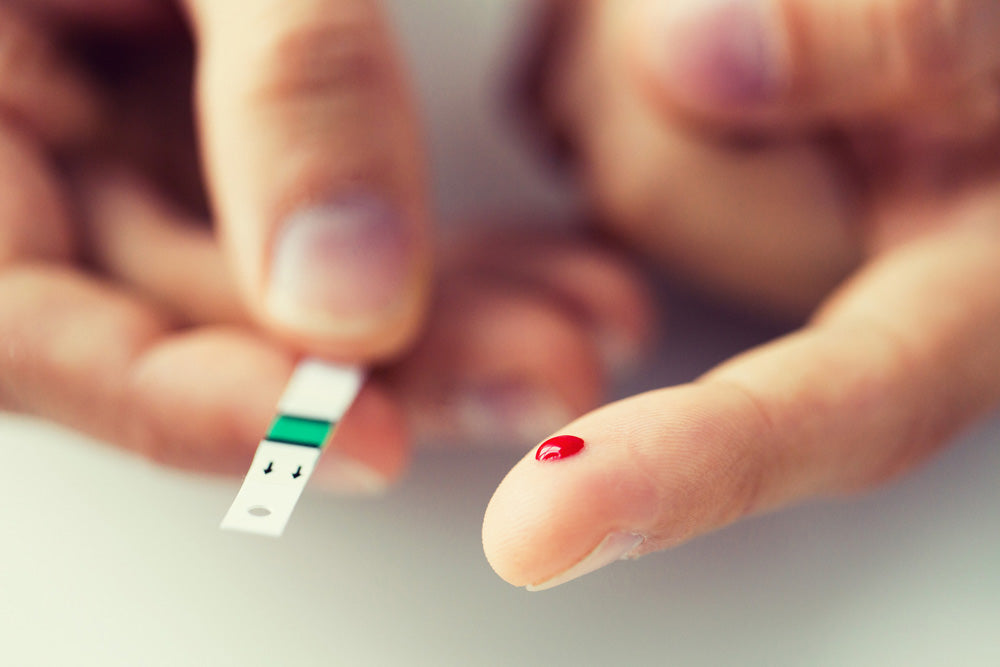I tested it three times with the same finger, but there were three results...
There are many factors that cause errors in blood glucose meters. Find the causes one by one and solve them accordingly. Don’t blame your blood glucose meter!
1. Disinfect with alcohol containing iodine
Iodine contains iodine. If it is not deiodized or the deiodination process is not done well, it will react with the enzyme in the test paper and lead to high blood sugar results. It is recommended that people with diabetes wash their hands with water and then use 75% white alcohol to disinfect.
2. The correct way to draw blood by squeezing your fingers hard:
1. According to the thickness of the skin, the blood collection pen can be adjusted appropriately.
Generally, the gears can be adjusted to about 3-4. When the blood collection needle is loaded into the blood collection pen, you only need to gently clamp it into the slot, and there is no need to clamp it too deep.
2. When taking blood from your fingertips, washing your hands with warm water, warming your fingers, and rubbing your fingers can increase the blood volume in your fingers.
3. Droop your arms briefly to allow blood to flow to your fingertips
4. Use your thumb to push from the metacarpophalangeal joint to the fingertip several times, and then use the blood collection pen to prick the skin on the fingertip side of the ring finger.
5. You need to wait for the liquid on your hands to evaporate before taking blood.
Under normal circumstances, using the above method, the blood will be in drops after blood collection, and there is no need to squeeze your fingers hard. If you squeeze your fingers too hard, the fluid inside will leak out, affecting the hematocrit, causing deviations in the results.
3. The blood glucose test strip has expired or is damp.
1. It is recommended that patients with diabetes should check the expiration date on the test paper packaging box before purchasing or using it, and do not use expired test paper to avoid affecting the test results.
2. The exposure time of the test paper in the air must be less than 3 minutes when taking out the test paper. When testing, it is recommended to install the blood collection pen first and then open the test paper package to shorten the exposure time of the test paper in the air.
3. If the test paper is bottled, the test must be completed within 3 months after opening the bottle cap. If the bottle is opened for more than 3 months, the remaining test paper in the bottle cannot be used again. For those with diabetes who monitor their blood sugar less often, it is recommended to use single-piece packaged test strips. (Some models of test strips cannot be opened for more than 6 months. Details can be found on the label of the test strip bottle)
4. There is alcohol or moisture remaining on your hands when collecting blood.
After washing hands or disinfecting, it is recommended to wait for the liquid on your hands to evaporate before taking blood. If it does not evaporate completely, the blood collected will not be in the form of drops, which is not conducive to the test paper absorbing blood. In addition, the remaining liquid will dilute the blood, leading to deviations in test results. .
5. The calibration code of the blood glucose meter does not match the calibration code of the test strip.
Sannuo currently has Anwen, Anzhun, Wenyi, EA-11, WeChat and other blood glucose meters that need to be checked for calibration codes. Each box of test paper has a different calibration code. Each box of test paper needs to be calibrated before using it for the first time. The blood glucose test can only be performed after the code is adjusted to be consistent with the test strip calibration code.
6. The blood glucose meter is not clean
When testing blood sugar, it is often contaminated by dust, fibers, debris, etc. in the environment. Especially when blood contaminates the test area of the instrument accidentally during testing, the test results will be affected. Therefore, the blood glucose meter must be cleaned regularly. Be careful when cleaning the test area. Do not use gasoline or highly corrosive solvents when wiping; you can use 75% alcohol or neutral detergent for wiping.

